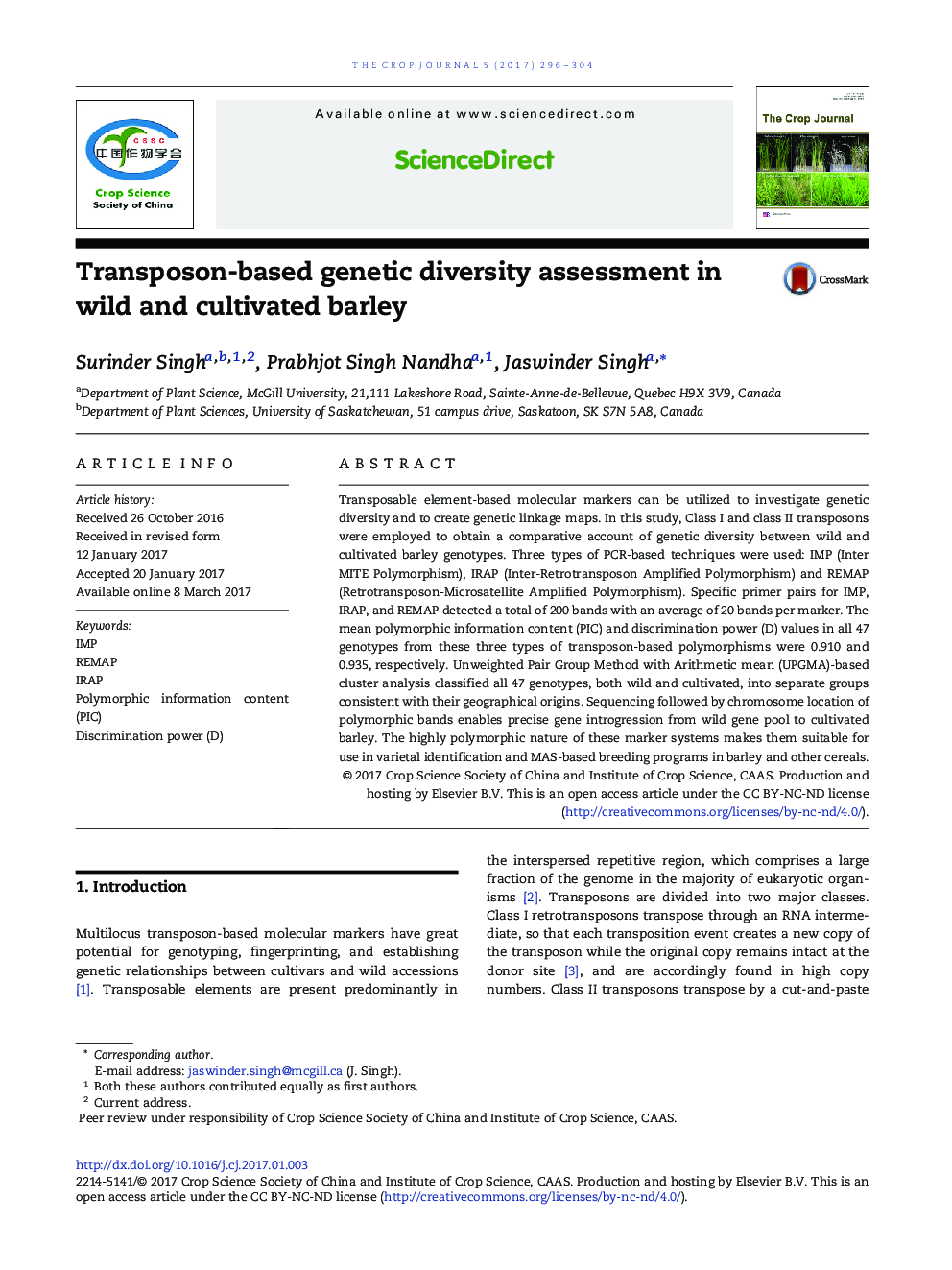| کد مقاله | کد نشریه | سال انتشار | مقاله انگلیسی | نسخه تمام متن |
|---|---|---|---|---|
| 5520831 | 1401232 | 2017 | 9 صفحه PDF | دانلود رایگان |
Transposable element-based molecular markers can be utilized to investigate genetic diversity and to create genetic linkage maps. In this study, Class I and class II transposons were employed to obtain a comparative account of genetic diversity between wild and cultivated barley genotypes. Three types of PCR-based techniques were used: IMP (Inter MITE Polymorphism), IRAP (Inter-Retrotransposon Amplified Polymorphism) and REMAP (Retrotransposon-Microsatellite Amplified Polymorphism). Specific primer pairs for IMP, IRAP, and REMAP detected a total of 200 bands with an average of 20 bands per marker. The mean polymorphic information content (PIC) and discrimination power (D) values in all 47 genotypes from these three types of transposon-based polymorphisms were 0.910 and 0.935, respectively. Unweighted Pair Group Method with Arithmetic mean (UPGMA)-based cluster analysis classified all 47 genotypes, both wild and cultivated, into separate groups consistent with their geographical origins. Sequencing followed by chromosome location of polymorphic bands enables precise gene introgression from wild gene pool to cultivated barley. The highly polymorphic nature of these marker systems makes them suitable for use in varietal identification and MAS-based breeding programs in barley and other cereals.
Journal: The Crop Journal - Volume 5, Issue 4, August 2017, Pages 296-304
